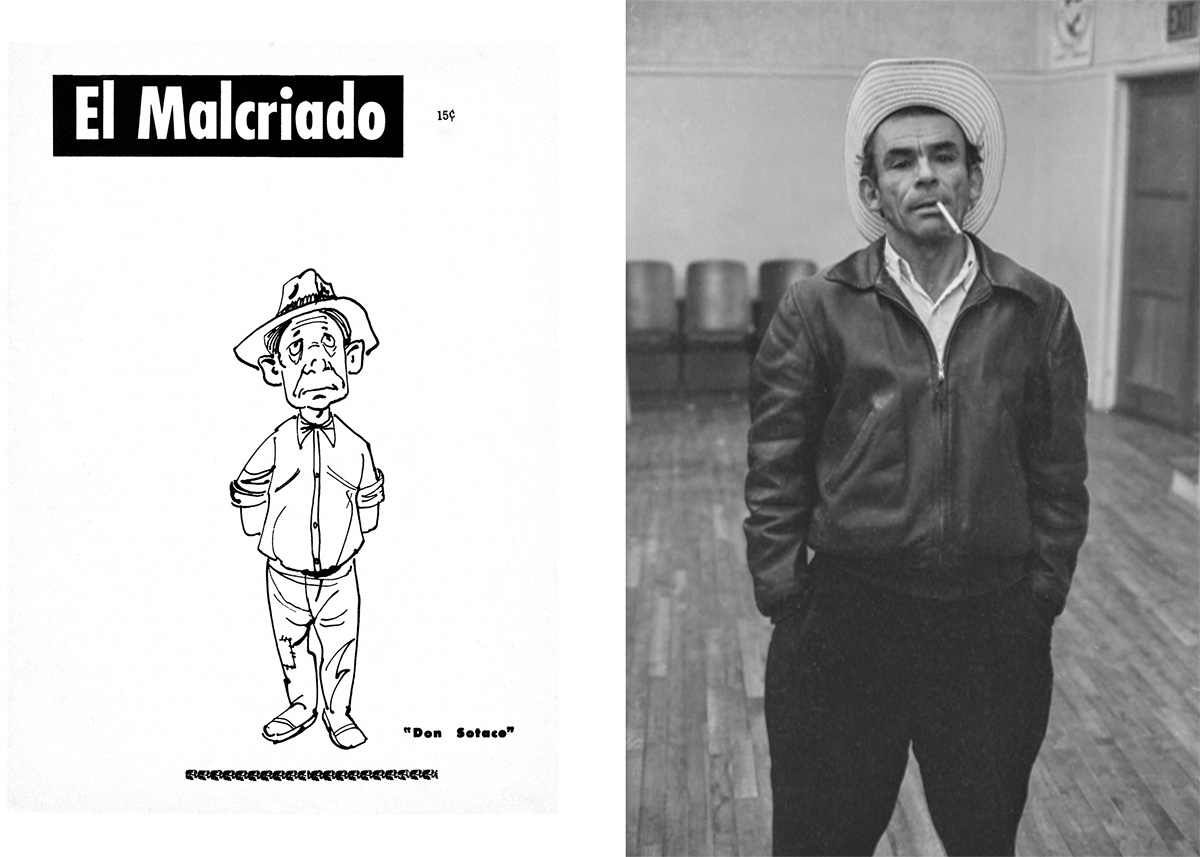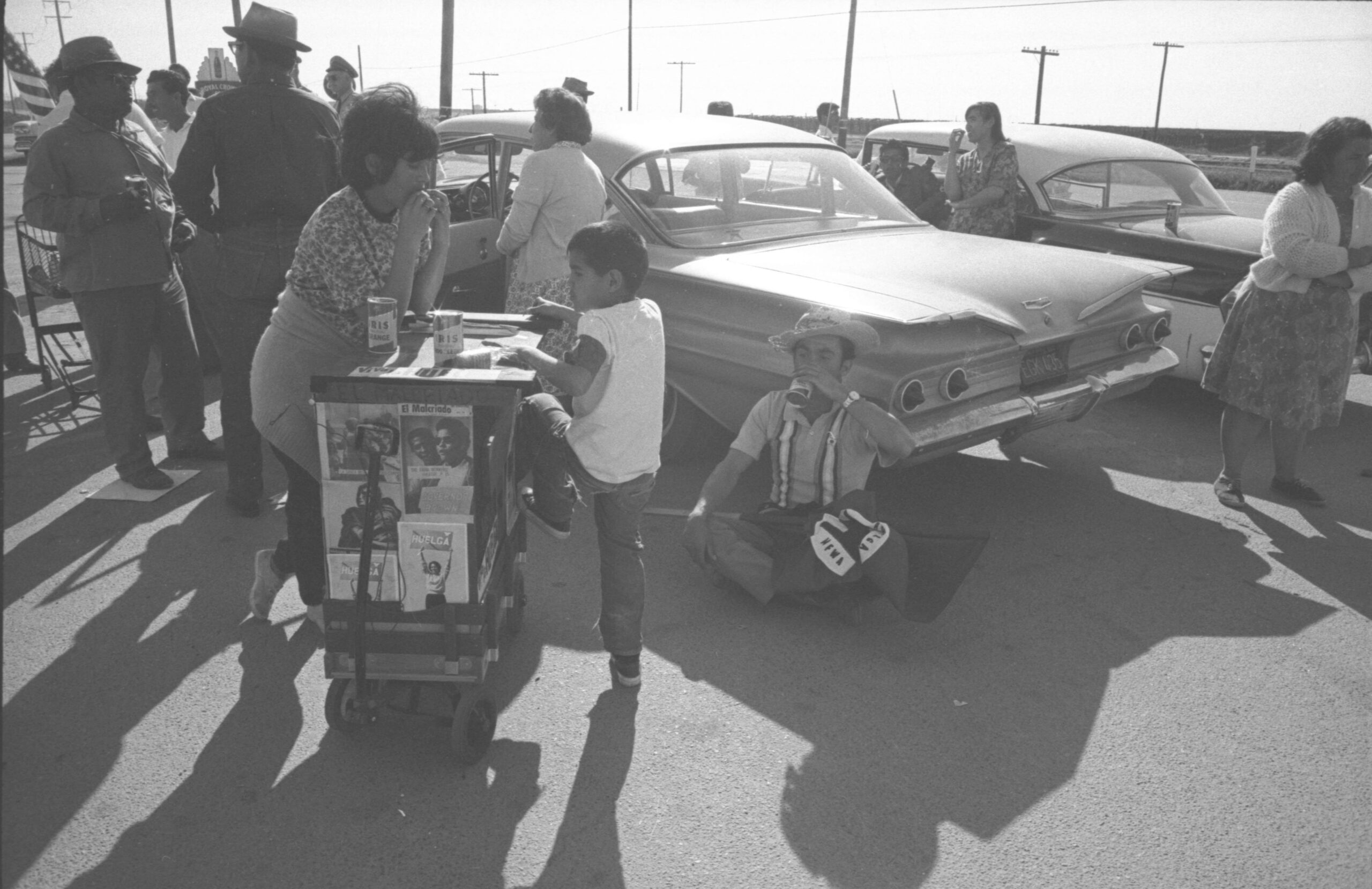El Malcriado
El Malcriado
El Malcriado staff pose in front of Doug Adair’s Econoline Ford Van, which they used for distribution of El Malcriado. Delano, ca. 1966. Photo by Emmon Clarke.
The publication El Malcriado was the voice of the farmworker movement. In 1964, César Chávez and the NFWA leaders put together the first newspaper issue that contained news, satirical cartoons, and editorial pieces from the NFWA staff. However, it wasn’t until volunteer Wendy Goepel introduced Bill Esher, a young college student from Syracuse University, to Chávez that El Malcriado could be further developed and distributed across the Central Valley.
Doug Adair and Daniel de los Reyes editing stories, Delano, ca. 1966. Photo by Emmon Clarke.
Chávez collaborated with Andy Zermeño, a talented young artist, to create the two characters on the covers of the first two issues: Don Sotaco and Don Coyote. They would be the first of a series of characters who would appear regularly in the paper.
El Malcriado Issue 1 with Don Sotaco (left) and Felipe Cantú, who played Don Sotaco (right)
Luis Valdez adapted Zermeño’s characters in Teatro Campesino: the humble and abused farmworker, Don Sotaco; the devious labor contractor and field boss, Don Coyote; and the fat, cigar-chomping owner of the harvest fields, Patroncito. Don Sotaco was initially thought of as a “dummy,” according to his creator Andy Zermeño but the movement grew and started to succeed and Don Sotaco gained agency and challenged authority, becoming more like a malcriado.
The name El Malcriado translates to “malcontent” or “unruly one,” perfect for a movement that could not be tamed and would not remain docile, but instead challenge authority. From 1964-1974, El Malcriado’s staff wrote articles and published caricatures that reflected scathing satire, salty humor, and information extrapolated through meticulous and tough research. Some people who worked on the staff during the early years were Donna Haber, Daniel de los Reyes, Bill Esher, Mary Murphy, Doug Adair, Chris Sánchez, Marcia Brooks, Kerry Ohta, Eli Risco, and Emmon Clarke.
Bill Esher working at the office of El Malcriado, Delano, ca. 1966. Photo by Emmon Clarke.
El Malcriado was sold by subscription for ten cents in barrio stores. Though it was originally in Spanish, an English edition starting with the 17th issue. By 1965, it boasted a circulation of 3000 (2000 Spanish, 1000 English), giving the National Farmworkers Association (NFWA) a base from which to gather support to organize.
El Malcriado: The Voice of the Farm Worker (Documentary Short)
El Malcriado raised the spirits of the farmworkers and provoked action. It also linked the movement to the Mexican Revolution, invoking the words and imagery of Emiliano Zapata, champion of the Mexican underclass, and linked the struggle to the civil rights movement. During its 10-year tenure, El Malcriado was published bi-weekly and served as a powerful tool for the United Farm Workers.
Marchers resting next to El Malcriado cart during the march to Sacramento, 1966
El Malcriado‘s subscription base was crucial to organizing the March to Sacramento in 1966, as it provided a network to welcome and care for the marchers coming into each town. Because the newspaper was already distributed there as well, the strikes and negotiations were in the public consciousness. When efforts shifted to boycotts in the cities in late 1966, El Malcriado began to be distributed there as well.
Tom & Ethel Bradley Center
California State University, Northridge
18111 Nordhoff Street, Northridge, CA 91330
Phone: (818) 677-1200 / Contact Us



